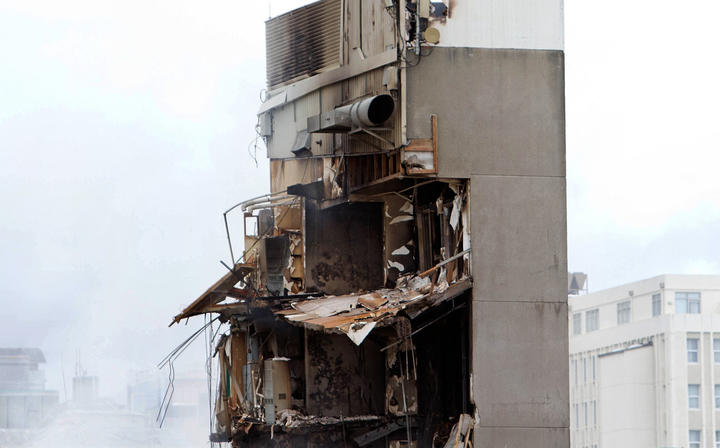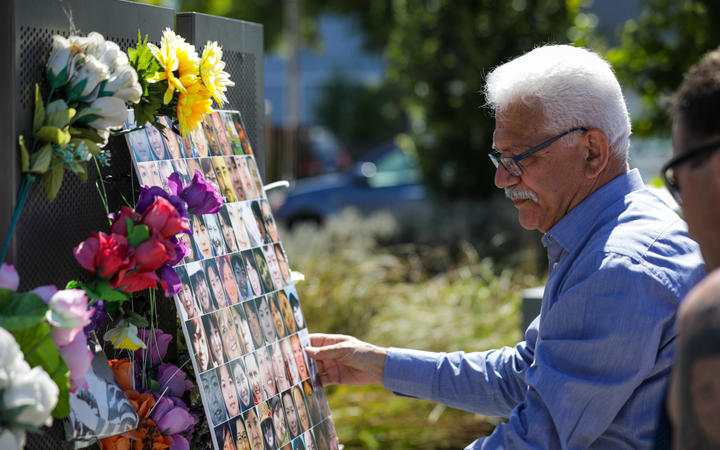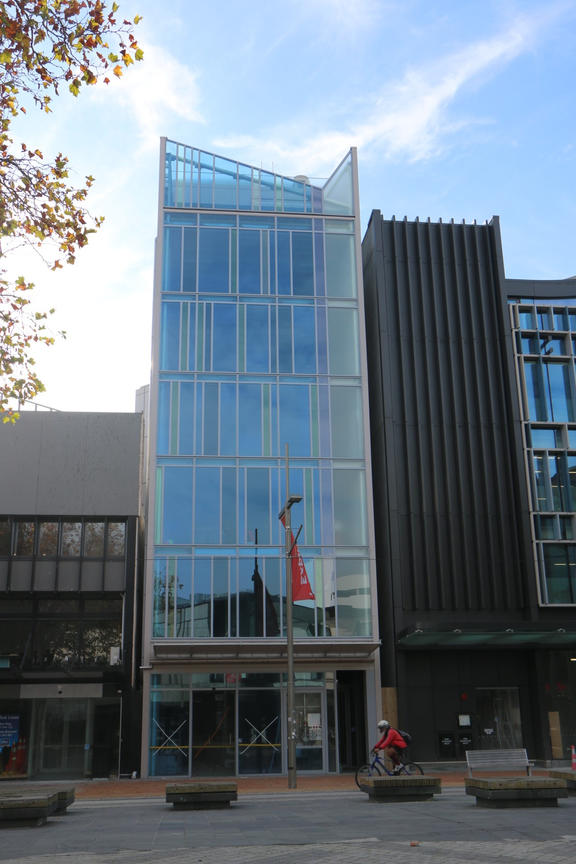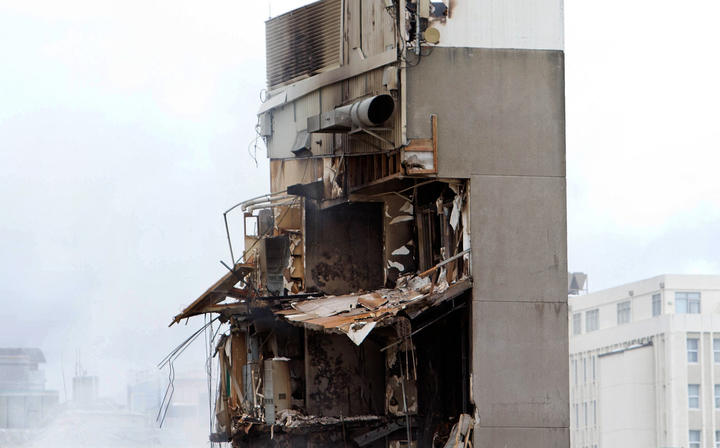Cabinet has agreed to a much tougher regulatory regime for the country’s 60,000 engineers, a move being hailed as a “landmark” and the first major good news in a decade for families of the CTV building collapse victims.

The damaged CTV building in the central business district in Christchurch on February 23, 2011 – a day after the city was rocked by a 6.3 magnitude earthquake.
Photo: AFP / Marty Melville
Law changes would enact mandatory registration and licensing, and powers to expel rogue engineers from the industry completely, for the first time.
Estimates are 38,000 engineers are currently unregulated.
The changes can be traced back to engineers dodging responsibility for the CTV building collapse, with 115 lives lost, in the 2011 Christchurch earthquake.
Maan Alkaisi, whose wife Maysoon died in the collapse, has led the families’ campaign for justice since.
“It’s the first time I am actually pleased, when I read the proposed changes,” he said today.
The changes adopt recommendations from the Royal Commission of Inquiry into the quake, and come eight years after a review found the regulatory regime was too weak.
“It’s good news to all those families who lost loved ones,” said professor Alkaisi, who praised the Ministry of Business, Innovation and Employment for listening to families and giving them advance notice of the changes.
“Justice is a way to ensure this does not happen again to others.”

CTV Families Group spokesperson Maan Alkaisi paying tribute to victims at the former site of the building on 16 December, 2020.
Photo: RNZ / Nate McKinnon
The ministry said the aim was to ensure engineers were highly skilled and competent, including introducing mandatory licensing for high-risk work such as structural and geotech engineering.
It was “unsure of the number of engineers who may be operating at below an acceptable standard”, it said.
Sanctions for incompetence would be tougher, said its manager of building policy, Amy Moorhead.
“Where that is the case, we want to put in place a system where that person can be disciplined … sanctioned, and potentially told they are no longer allowed to practice,” she said.
Engineering New Zealand (ENZ) chief executive Richard Templer said options to prosecute engineers would increase.
Engineers broadly backed the law changes to lift standards, he said.
“At the moment, there’s no requirement in terms of a code of ethics, educational accreditation or anything like that, and you can say you can do engineering work and say you’re an engineer,” Templer said.
“This brings us in line with other professions, like doctors, nurses, teachers.
“It would be accurate to call it a landmark change.”
The new regime would cover not just construction, but transport, the food industry, and water engineering – poor engineering contributed to the Havelock North water contamination in 2016 that made 5000 people ill and was implicated in several deaths.
However, Christchurch structural engineer Daniel Langford said the lack of willingness to tackle bad practice, not legal weaknesses, had been the main problem.
“It’s same-same, but different, I think, by the sounds of it, but I guess the proof will be in the pudding.”

230 High St in Christchurch.
Photo: RNZ / Katie Todd
High-profile cases of badly deficient structural engineering designs include the Harington St carpark building in Tauranga, 230 High St in Christchurch, and several multi-storeys damaged in Wellington in the 2016 Kaikōura quake.
If the regulator did random audits, that might help push up the declining level of “care” Langford said he had noticed among practitioners over the past 15 years.
“When fees are tight and you run out of money, the first thing that goes out the door, is the thorough quality assurance,” he said.
“We’ve been caught out” so brought in compulsory extra checks, he said.
In the CTV case, ENZ is waiting for a final decision on whether to dismiss or take disclipinary action over a complaint against engineer Alan Reay, principal of the firm that designed the building, after years of legal manouevring. A complaint laid in 2012 was reopened in 2019.
“Justice delayed is justice denied,” Alkaisi said today.
“Most of these changes in the occupational regulations is because of the weakness of Engineering New Zealand … I mean, just what kind of organisation takes 11 years to decide whether they do something or not?”
The new regulator being independent of the industry, unlike ENZ, was key, he said.
The families’ campaign for justice would continue, Alkaisi said.
A bill will now be drafted; further consultation on the changes would be via select committee. It is likely to take till 2024 to enact them.
The ministry said the new regime would be funded by industry levies.
